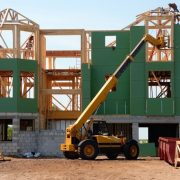How To Find Out If Your House Is Built With Quality Materials
There’s a lot going on in a house; there are many different parts, some seen and some unseen. Sometimes, if the developer or person who built it tended to cut corners, there may be elements that need to be replaced or that are not functioning as well as they could. If some of the materials that were used are not of the best quality, this could affect the way the rest of the house is holding up, literally. The best way to check if your house is built with quality materials is to look physically at every part of it to see for yourself.
But this is not always easy for you to do on your own.
Because there are often parts of the house that you may not be able to access, they may require a professional to do an inspection to ascertain what materials the house is made from, and whether they are in need of repair or replacement. Knowledge of the different materials available and what to look for, will give you a good indication about how well the materials are performing. This will also give you an idea about their longevity. Companies such as Black and White Houseraising and Restumping specialise in knowing what is happening underneath the surface of houses, and it is important to have the right equipment to do the work that is required.
Check the Foundations
Foundational materials are often hidden underneath the house, so we usually have no idea what is happening with them until something goes wrong or we hire a professional to check the area. If quality materials have been used for the foundations, you will be able to see evidence of it in both the exterior and interior walls of the house. Poor quality materials that have caused foundation issues will produce cracks in these walls. Uneven floors are another indication that there may be a problem with the foundation materials too.
When it comes to foundations, the appropriate and quality materials are essential, because anything less will mean you could jeopardise your home and your family’s safety. Depending on the environment surrounding your home and the changing elements it is exposed to, various materials will be needed for different circumstances. A good builder will employ professionals to do the work, which means that they will use quality materials suited to each individual job.

